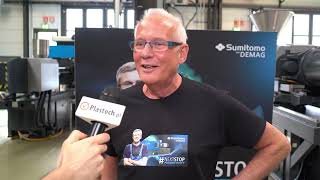 Lanxess, one of the manufacturers of biocidal active ingredients and biocide formulations, recently started using a new formulation method for algicides in paints. This new method delivers added benefits for algicidal formulations. Several tests showed that it reduced active ingredient leaching from paints caused by rain by over 50 percent compared to conventional algicides. By improving leaching behavior, the method extends the lifetime of facade coatings and can reduce the amount of active ingredient required.
Lanxess, one of the manufacturers of biocidal active ingredients and biocide formulations, recently started using a new formulation method for algicides in paints. This new method delivers added benefits for algicidal formulations. Several tests showed that it reduced active ingredient leaching from paints caused by rain by over 50 percent compared to conventional algicides. By improving leaching behavior, the method extends the lifetime of facade coatings and can reduce the amount of active ingredient required.In many European countries, architects and construction companies are legally obligated to deliver defect-free buildings, which means they need to protect building surfaces from microbial coverage for a certain period of time. In many cases, biocides are indispensable as a means of significantly extending the lifespan of facade coatings and satisfying the ever burgeoning demands of the construction sector. Nonetheless, their effectiveness slowly decreases over time.
Researchers in the Material Protection Products (MPP) business unit of Lanxess have now succeeded in using cutting-edge "slow-release technology" to develop a new algicidal product formulation that exhibits a far better active ingredient retention rate in the color matrix than standard dry-film preservation products. Widely accepted test methods have verified the resultant benefits. For example, far lower quantities of the active ingredient can deliver results that are comparable with those achieved using a product based on conventional formulation methods. In many examples, just half or even a third of the original dose is needed to deliver effective surface protection against algae growth. Nicolas Gallacier, Product Manager Paints and Coatings in the Biocides business line at MPP, underlines the cost-effectiveness: "If we stick with the original dose, the service life of the coating can be significantly extended." Dr. Frank Sauer, Manager Regulatory Affairs at MPP, continues: "The slow-release technology simultaneously improves ecotoxicological properties in relation to the EC50 value. That means its behavior in the environmental compartment under consideration has been significantly improved without compromising microbicidal efficacy at the point where film protection agents are actually needed, i.e. the surface of the facade."



